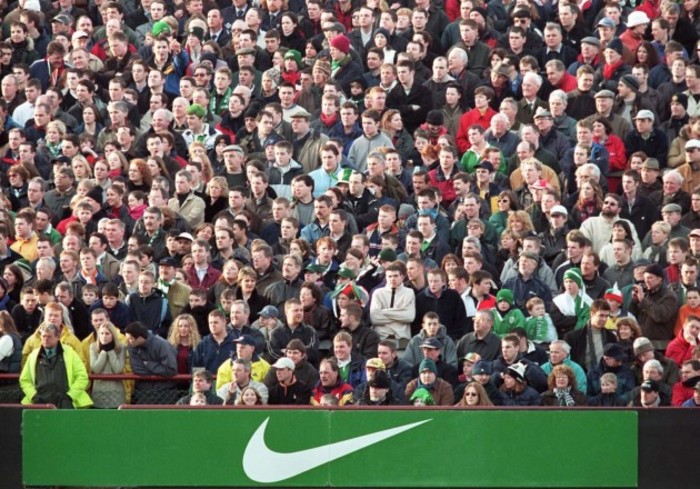How firms can find the sponsorship 'sweet spot' for their brands
Consumers are smart – and they’ll see through cynical marketing ploys.
ALBERT EINSTEIN ONCE said that we should strive not to be a success, but rather be of value. In sponsorship, I rarely have occasion to quote Einstein, but this really resonates with our industry.
To get the most out of your sponsorship investment, fundamentally you need to ensure that it’s delivering value for your brand.
This isn’t achieved by just securing the right sponsorship asset – be it an event, a team, a long-term campaign or charity partnership – you also need to ensure that how you activate the asset ties in with your organisation and that your brand objectives are at the heart of how you evaluate the partnership.
When it comes to deciding where to focus your investment you must firstly look at what you want to achieve. Sponsorship objectives should never exist in isolation of the overall brand objectives.
Secondly, identify your target audience. A sponsorship asset that can reach your target audience, deliver what the brand is trying to achieve and is the right fit for your organisation is the sponsorship ‘sweet spot’.
Another key factor is giving strong consideration to how you will elevate your sponsorship above the noise that consumers are being bombarded with on daily basis.
Fortunately for the industry, the sponsorship market is buoyant at the minute, but in many cases this is leading to a cluttered space where the brand may not be adequately supporting a partnership, or the activity they are rolling out as part of the sponsorship may not be distinctive enough to stand out from the noise.
Brands need to be very cognisant of this and have the adequate budget to push the sponsorship to the target market so that you are not relying on the partnership alone.
Once you have secured your sponsorship, it’s imperative that you build a strong relationship with the partner. In order to maximise the sponsorship’s potential, they need to understand what you are about and what your corporate values are.
Consumers are smart and will ultimately see through activity that is overly commercial. If values and strategies can align, then the resulting activity will make much more sense in the eye of the consumer.
In addition, if a brand can demonstrate a strong role and add value to both the partner organisation and the consumer experience, then there is no doubt that this will substantially reward all concerned.

Reputation matters
Brands live and die by their reputation. In sponsorship, this is especially the case with naming rights. By including your brand in the naming of a venue, competition or music festival, it is critical that due diligence is done in understanding the culture and values of the partner organisation.
You need to ensure that any risk to the brand is identified from the outset and that mitigating procedures are put in place. When it comes to naming rights, it is very much a case that the partner organisation and the brand will sink or swim together.
Sponsorship is not just an effective way of targeting your audience externally but also can drive great engagement amongst your employees. In many organisations, this is largely under-utilised; however in my short time in Three, I have been very impressed by the emphasis on this.
From weekly ticket competitions for 3Arena concerts, football matches and festivals to internal events such as Q&As with Martin O’Neill, the sponsorship assets are definitely working hard for the internal audience.
Ultimately, if the sponsorship is high-profile and resonates with the audience, there is no doubt that it will increase the organisation’s ability to attract talent.
When it comes to measurement and evaluation of the partnership, this is an area that the sponsorship discipline is consistently scrutinised on – possibly unfairly. The question is often ‘what are we getting for our money’, however there is no simple way to answer this.
I’m also not convinced that an ‘industry standard’ is an appropriate response. It really comes back to the overall objectives of the brand and the evaluation model that should be built around this.
It should include looking at the effectiveness of sponsorship spending, such as the additional activity the brand used to push it out and which channels worked the best to enhance the brand’s association with the partnership.
It is important that you are learning from your evaluation process and that it informs how you will adapt your approach in the future.
Karl Donnelly is head of sponsorship at Three Ireland.
If you want to share your opinion, advice or story, email opinion@fora.ie.






